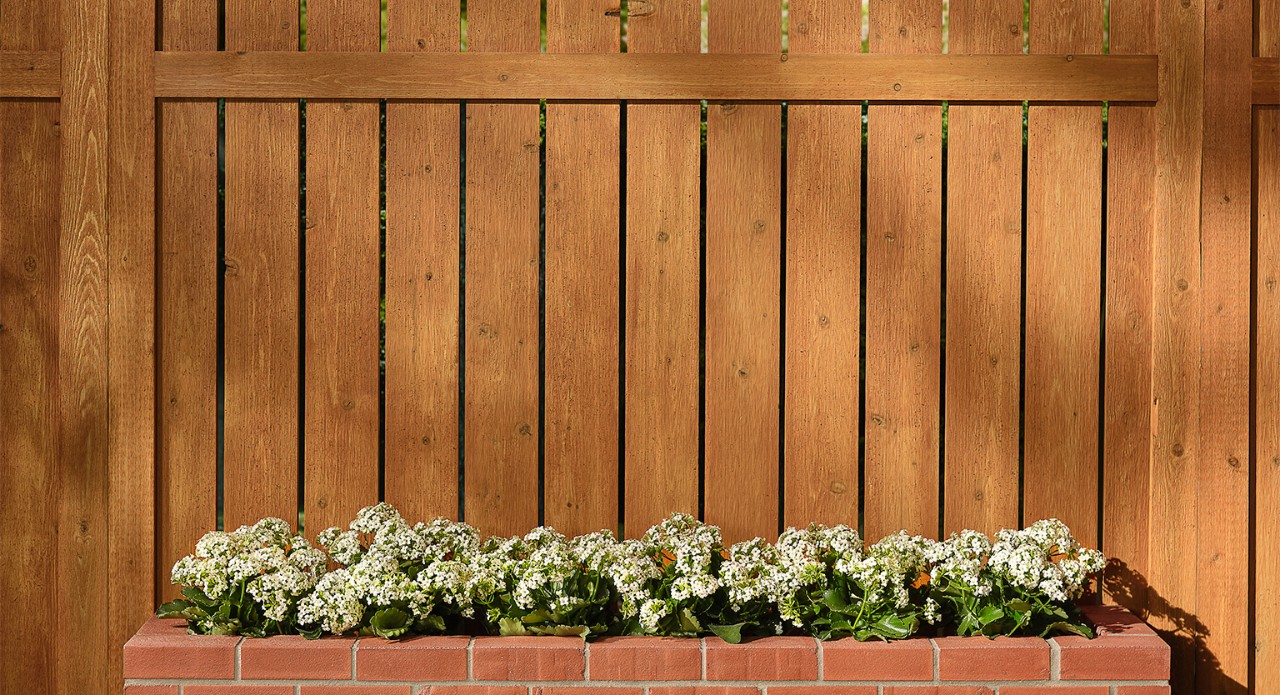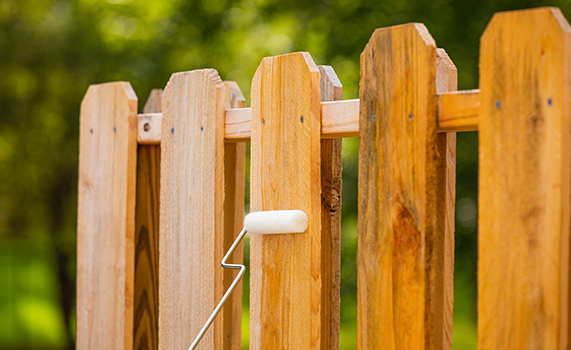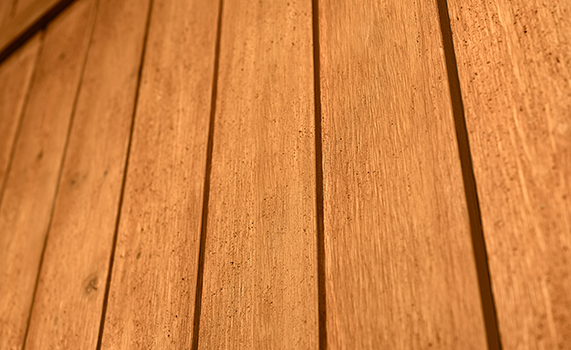
PROTECTING WOOD
How to Stain a Fence
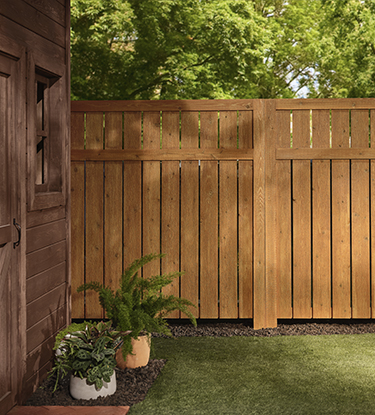
PROTECTING WOOD
How to Stain a Fence
Choose the Right Look and Protection
The first step in protecting your fence is to determine if it's time to re-treat your surface. Performing the splash test will help you decide. Splash water on a small area of the fence and if the water is absorbed rapidly, darkening the wood, it is time to re-apply a clear waterproofer or exterior stain. If the water beads up or otherwise remains on top of the wood, then it does not need protection at this time.
In addition to protecting the wood, the type of waterproofer or fence stain you use can make an aesthetic difference in your landscaping. Therefore, when choosing a stain for your fence, you need to consider the characteristics of each type and the definitive look you want to achieve. We have a variety of Thompson's® WaterSeal® Exterior Wood Sealers to choose from.
A new fence should be protected as soon as possible after installation. Another option would be to waterproof or stain the boards before installing.
TIP: Whatever product you choose, read the label carefully, follow the manufacturer's instructions, and apply using the specified brush, roller, paint pad or sprayer.
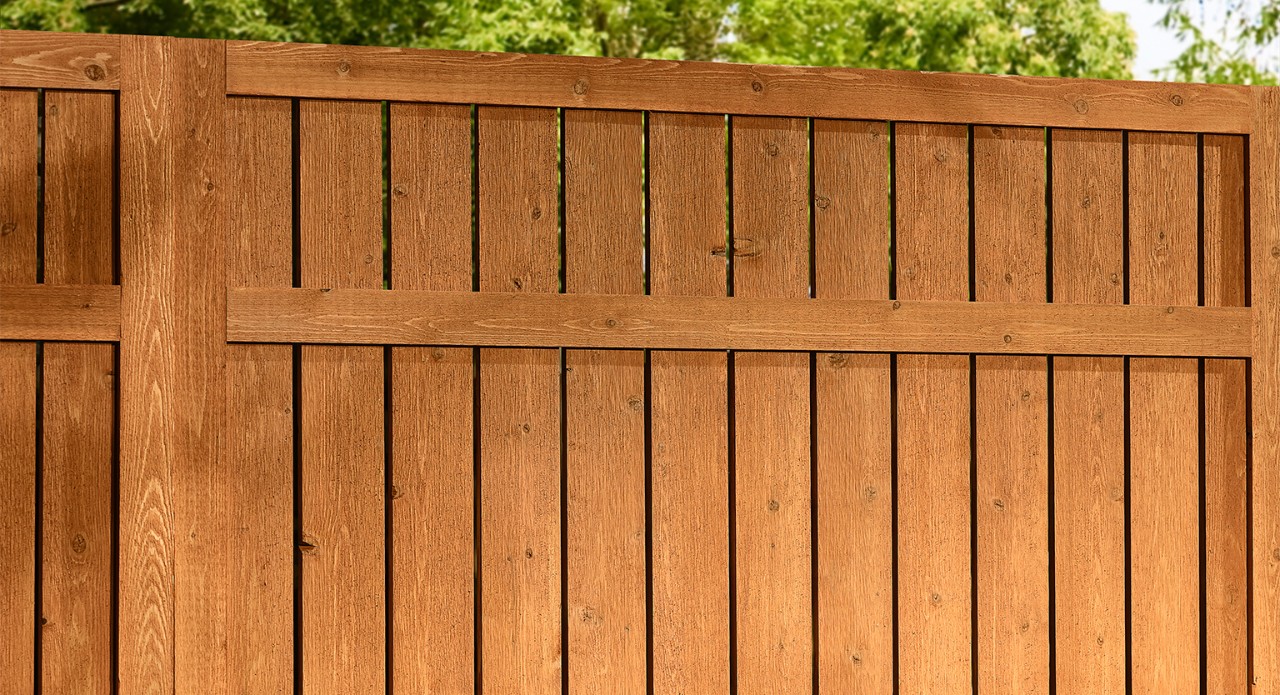
Preparation is Critical
All exterior wood, from decks to fences to siding, should be cleaned before sealing, staining or painting. Cleaning is a crucial step to long-lasting protection. It removes the discoloration that makes weathered wood unsightly and will improve the durability of a waterproofer or stain. Before cleaning, protect your eyes, skin, plants and other stationary items in the area. While cleaning, use an appropriate cleaner, power-washer, or a combination of the two, to remove stains from dirt, mildew, mold, algae and prior finishes.
Follow product label application instructions carefully. Allow the formula to sit on the fence for the time indicated on the product label, usually 10-15 minutes. Next, scrub the surface using a stiff bristle brush to remove all elements and then rinse thoroughly.
Avoid lap marks by applying the waterproofer or stain along the vertical boards, moving from top to bottom and working on one or two boards at a time.
For best results, use an exterior paint pad with a long handle.
To prevent lap marks, keep the leading edge "wet" and distribute the finish evenly. Brushes are particularly effective in tight or hard-to-reach spaces.
Follow package directions to clean tools with either mineral spirits or soap and water.
How-Tos
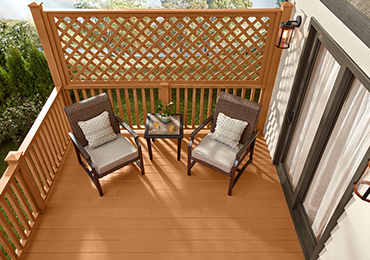
Make sure your deck gets the outdoor protection you want and the seal of approval it deserves.
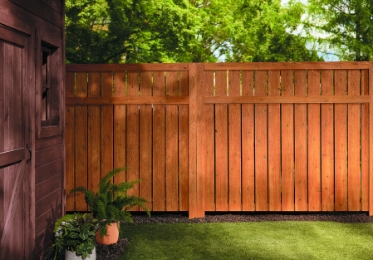
Got any other questions? We got answers in our FAQs.
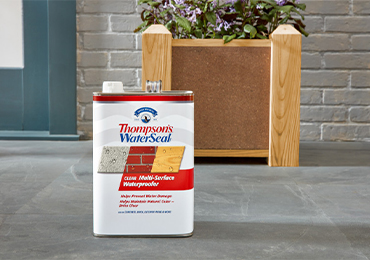
We not only protect wood surfaces — but concrete, brick, masonry, and more.
